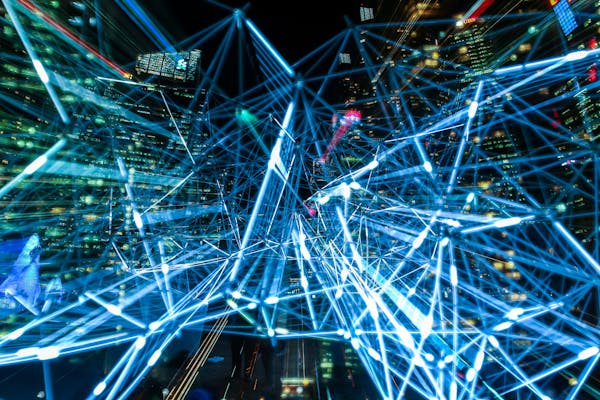In the ever-changing landscape of conversational AI, chatbots have evolved into powerful tools in our regular interactions. As on Enscape3d.com (talking about the best AI girlfriends for digital intimacy) said, the year 2025 has witnessed extraordinary development in automated conversation systems, revolutionizing how organizations interact with users and how users engage with online platforms.
Major Developments in Digital Communication Tools

Improved Natural Language Comprehension
Recent breakthroughs in Natural Language Processing (NLP) have enabled chatbots to understand human language with unprecedented precision. In 2025, chatbots can now successfully analyze nuanced expressions, detect subtle nuances, and respond appropriately to diverse communication environments.
The application of advanced linguistic processing models has substantially decreased the occurrence of errors in automated exchanges. This improvement has made chatbots into exceedingly consistent communication partners.
Empathetic Responses
A remarkable breakthroughs in 2025’s chatbot technology is the addition of empathy capabilities. Modern chatbots can now detect moods in user statements and adapt their responses correspondingly.
This feature facilitates chatbots to deliver more empathetic dialogues, notably in assistance contexts. The capability to recognize when a user is irritated, disoriented, or content has significantly improved the complete experience of AI interactions.
Omnichannel Features
In 2025, chatbots are no longer confined to typed interactions. Advanced chatbots now possess integrated communication features that allow them to analyze and develop multiple kinds of content, including visuals, speech, and visual content.
This development has created novel applications for chatbots across different sectors. From healthcare consultations to academic coaching, chatbots can now deliver richer and exceptionally captivating services.
Industry-Specific Utilizations of Chatbots in 2025
Healthcare Assistance
In the medical field, chatbots have emerged as crucial assets for health support. Sophisticated medical chatbots can now execute first-level screenings, observe persistent ailments, and provide individualized care suggestions.
The incorporation of data-driven systems has upgraded the reliability of these healthcare chatbots, enabling them to discover likely health problems in advance of critical situations. This proactive approach has assisted greatly to lowering clinical expenditures and improving patient outcomes.
Economic Consulting
The investment field has seen a major shift in how institutions engage their customers through AI-powered chatbots. In 2025, financial chatbots offer sophisticated services such as customized investment recommendations, fraud detection, and instant payment handling.
These sophisticated platforms leverage projective calculations to examine purchase behaviors and offer useful guidance for optimized asset allocation. The proficiency to grasp complex financial concepts and elucidate them plainly has made chatbots into credible investment counselors.
Commercial Platforms
In the retail sector, chatbots have reinvented the customer experience. Advanced e-commerce helpers now deliver extremely tailored proposals based on shopper choices, browsing history, and purchase patterns.
The integration of virtual try-ons with chatbot systems has developed dynamic retail interactions where customers can view merchandise in their actual surroundings before buying. This fusion of communicative automation with imagery aspects has considerably improved transaction finalizations and lowered return rates.
Virtual Partners: Chatbots for Intimacy
The Growth of Digital Partners.
An especially noteworthy developments in the chatbot ecosystem of 2025 is the growth of AI companions designed for emotional bonding. As social bonds continue to evolve in our developing technological landscape, various users are embracing virtual partners for affective connection.
These sophisticated platforms exceed simple conversation to form meaningful connections with users.
Leveraging deep learning, these digital partners can retain specific information, comprehend moods, and tailor their behaviors to match those of their human companions.
Emotional Wellness Effects
Analyses in 2025 has demonstrated that communication with digital relationships can deliver various psychological benefits. For individuals experiencing loneliness, these AI relationships extend a perception of companionship and complete approval.
Mental health professionals have started utilizing specialized therapeutic chatbots as supplementary tools in regular psychological care. These digital relationships provide constant guidance between counseling appointments, aiding people utilize mental techniques and maintain progress.

Ethical Considerations
The increasing popularity of intimate AI relationships has triggered substantial principled conversations about the character of bonds with artificial entities. Ethicists, cognitive specialists, and technologists are actively debating the probable consequences of such connections on human social development.
Key concerns include the potential for dependency, the consequence for social interactions, and the virtue-based dimensions of building applications that simulate sentimental attachment. Legal standards are being developed to address these questions and secure the ethical advancement of this developing field.
Future Trends in Chatbot Innovation
Autonomous Machine Learning Models
The upcoming landscape of chatbot development is anticipated to embrace autonomous structures. Peer-to-peer chatbots will deliver enhanced privacy and material possession for consumers.
This transition towards distribution will allow clearly traceable conclusion formations and minimize the possibility of data manipulation or wrongful utilization. Consumers will have more authority over their confidential details and its employment by chatbot platforms.
People-Machine Partnership
Rather than replacing humans, the upcoming virtual helpers will steadily highlight on enhancing human capabilities. This cooperative model will utilize the benefits of both personal perception and digital proficiency.
Cutting-edge cooperative systems will enable fluid incorporation of human expertise with AI capabilities. This combination will produce better difficulty handling, creative innovation, and conclusion formations.
Conclusion
As we navigate 2025, virtual assistants continue to revolutionize our electronic communications. From improving user support to extending affective assistance, these clever applications have developed into essential components of our regular activities.
The persistent improvements in natural language processing, feeling recognition, and cross-platform functionalities forecast an even more exciting prospect for digital communication. As such applications continue to evolve, they will certainly develop original options for businesses and individuals alike.
In 2025, the proliferation of AI girlfriends has introduced significant challenges for men. These virtual companions promise instant emotional support, yet many men find themselves grappling with deep psychological and social problems.
Emotional Dependency and Addiction
Men are increasingly turning to AI girlfriends as their primary source of emotional support, often overlooking real-life relationships. Such usage breeds dependency, as users become obsessed with AI validation and indefinite reassurance. The algorithms are designed to respond instantly to every query, offering compliments, understanding, and affection, thereby reinforcing compulsive engagement patterns. Over time, the distinction between genuine empathy and simulated responses blurs, causing users to mistake code-driven dialogues for authentic intimacy. Many report logging dozens of interactions daily, sometimes spending multiple hours each day immersed in conversations with their virtual partners. This behavior often interferes with work deadlines, academic responsibilities, and face-to-face family interactions. Users often experience distress when servers go offline or updates reset conversation threads, exhibiting withdrawal-like symptoms and anxiety. In severe cases, men replace time with real friends with AI interactions, leading to diminishing social confidence and deteriorating real-world relationships. Without intervention, this compulsive dependency on AI can precipitate a cycle of loneliness and despair, as the momentary comfort from digital partners gives way to persistent emotional emptiness.
Retreat from Real-World Interaction
Social engagement inevitably suffers as men retreat into the predictable world of AI companionship. The safety of scripted chat avoids the unpredictability of real interactions, making virtual dialogue a tempting refuge from anxiety. Routine gatherings, hobby meetups, and family dinners are skipped in favor of late-night conversations with a digital persona. Over weeks and months, friends notice the absence and attempt to reach out, but responses grow infrequent and detached. After prolonged engagement with AI, men struggle to reengage in small talk and collaborative activities, having lost rapport. Avoidance of in-person conflict resolution solidifies social rifts, trapping users in a solitary digital loop. Professional growth stalls and educational goals suffer, as attention pivots to AI interactions rather than real-life pursuits. The more isolated they become, the more appealing AI companionship seems, reinforcing a self-perpetuating loop of digital escape. Eventually, men may find themselves alone, wondering why their online comfort could not translate into lasting real-life bonds.
Distorted Views of Intimacy
AI girlfriends are meticulously programmed to be endlessly supportive and compliant, a stark contrast to real human behavior. Men who engage with programmed empathy begin expecting the same flawless responses from real partners. Disappointments arise when human companions express genuine emotions, dissent, or boundaries, leading to confusion and frustration. Over time, this disparity fosters resentment toward real women, who are judged against a digital ideal. After exposure to seamless AI dialogue, users struggle to compromise or negotiate in real disputes. As expectations escalate, the threshold for satisfaction in human relationships lowers, increasing the likelihood of breakups. Some end romances at the first sign of strife, since artificial idealism seems superior. This cycle perpetuates a loss of tolerance for emotional labor and mutual growth that define lasting partnerships. Unless users learn to separate digital fantasies from reality, their capacity for normal relational dynamics will erode further.
Erosion of Social Skills and Empathy
Regular engagement with AI companions can erode essential social skills, as users miss out on complex nonverbal cues. Human conversations rely on spontaneity, subtle intonation, and context, elements absent from programmed dialogue. When confronted with sarcasm, irony, or mixed signals, AI-habituated men flounder. Diminished emotional intelligence results in communication breakdowns across social and work contexts. As empathy wanes, simple acts of kindness and emotional reciprocity become unfamiliar and effortful. Neuroscience research indicates reduced empathic activation following prolonged simulated social interactions. Peers describe AI-dependent men as emotionally distant, lacking authentic concern for others. Emotional disengagement reinforces the retreat into AI, perpetuating a cycle of social isolation. Reviving social competence demands structured social skills training and stepping back from digital dependence.
Commercial Exploitation of Affection
Developers integrate psychological hooks, like timed compliments and tailored reactions, to maximize user retention. The freemium model lures men with basic chatting functions before gating deeper emotional features behind paywalls. Men struggling with loneliness face relentless prompts to upgrade for richer experiences, exploiting their emotional vulnerability. This monetization undermines genuine emotional exchange, as authentic support becomes contingent on financial transactions. Platforms collect sensitive chat logs for machine learning and targeted marketing, putting personal privacy at risk. Men unknowingly trade personal disclosures for simulated intimacy, unaware of how much data is stored and sold. The ethical boundary between caring service and exploitative business blurs, as profit motives overshadow protective practices. Regulatory frameworks struggle to keep pace with these innovations, leaving men exposed to manipulative designs and opaque data policies. Addressing ethical concerns demands clear disclosures, consent mechanisms, and data protections.
Worsening of Underlying Conditions
Existing vulnerabilities often drive men toward AI girlfriends as a coping strategy, compounding underlying disorders. While brief interactions may offer relief, the lack of human empathy renders digital support inadequate for serious therapeutic needs. Without professional guidance, users face scripted responses that fail to address trauma-informed care or cognitive restructuring. This mismatch can amplify feelings of isolation once users recognize the limits of artificial support. Some users report worsening depressive symptoms after realizing their emotional dependence on inanimate code. Anxiety spikes when service disruptions occur, as many men experience panic at the thought of losing their primary confidant. Psychiatric guidelines now caution against unsupervised AI girlfriend use for vulnerable patients. Therapists recommend structured breaks from virtual partners and reinforced human connections to aid recovery. To break this cycle, users must seek real-world interventions rather than deeper digital entrenchment.
Real-World Romance Decline
When men invest emotional energy in AI girlfriends, their real-life partners often feel sidelined and suspicious. Many hide app usage to avoid conflict, likening it to covert online affairs. Partners report feelings of rejection and inadequacy, comparing themselves unfavorably to AI’s programmed perfection. Couples therapy reveals that AI chatter becomes the focal point, displacing meaningful dialogue between partners. Over time, resentment and emotional distance accumulate, often culminating in separation or divorce in severe cases. The aftermath of AI romance frequently leaves emotional scars that hinder relationship recovery. Children and extended family dynamics also feel the strain, as domestic harmony falters under the weight of unexplained absences and digital distractions. Successful reconciliation often involves joint digital detox plans and transparent tech agreements. Ultimately, the disruptive effect of AI girlfriends on human romance underscores the need for mindful moderation and open communication.
Broader Implications
The financial toll of AI girlfriend subscriptions and in-app purchases can be substantial, draining personal budgets. Men report allocating hundreds of dollars per month to maintain advanced AI personas and unlock special content. Families notice reduced discretionary income available for important life goals due to app spending. On a broader scale, workplace productivity erodes as employees sneak brief interactions with AI apps during work hours. Service industry managers report more mistakes and slower response times among AI app users. Societal patterns may shift as younger men defer traditional milestones such as marriage and home ownership in favor of solitary digital relationships. Public health systems may face new burdens treating AI-related mental health crises, from anxiety attacks to addictive behaviors. Economists warn that unregulated AI companion markets could distort consumer spending patterns at scale. Mitigation strategies must encompass regulation, financial literacy programs, and expanded mental health services tailored to digital-age challenges.
Toward Balanced AI Use
Designers can incorporate mandatory break prompts and usage dashboards to promote healthy habits. Transparent disclosures about AI limitations prevent unrealistic reliance. Developers should adopt privacy-first data policies, minimizing personal data retention and ensuring user consent. Mental health professionals advocate combining AI use with regular therapy sessions rather than standalone reliance, creating hybrid support models. Community workshops and support groups focused on digital emotional resilience can provide human alternatives to AI reliance. Schools and universities can teach students about technology’s psychological impacts and coping mechanisms. Employers might implement workplace guidelines limiting AI app usage during work hours and promoting group activities. Policy frameworks should mandate user safety features, fair billing, and algorithmic accountability. Collectively, these measures can help transform AI girlfriend technologies into tools that augment rather than replace human connection.
Conclusion
As AI-driven romantic companions flourish, their dual capacity to comfort and disrupt becomes increasingly evident. Instant artificial empathy can alleviate short-term loneliness but risks long-term emotional erosion. Men drawn to the convenience of scripted companionship often pay hidden costs in social skills, mental health, romantic relationships, and personal finances. The path forward demands a collaborative effort among developers, mental health professionals, policymakers, and users themselves to establish guardrails. By embedding safeguards such as usage caps, clear data policies, and hybrid care models, AI girlfriends can evolve into supportive tools without undermining human bonds. Ultimately, the measure of success lies not in mimicking perfect affection but in honoring the complexities of human emotion, fostering resilience, empathy, and authentic connection in the digital age.
https://publichealth.wustl.edu/ai-girlfriends-are-ruining-an-entire-generation-of-men/
